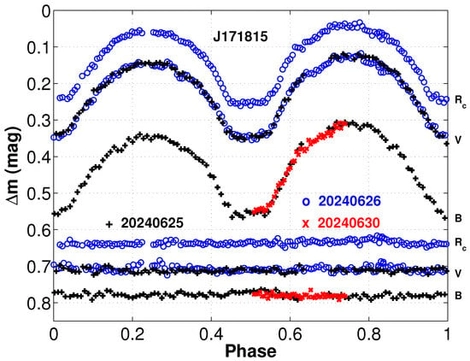- Review
An Extremely Low Mass Ratio Binary at the Key Stage of Evolution
- Fen Liu,
- Difu Guo and
- Xu Chen
- + 3 authors
This study presents multi-band photometric observations and detailed period analysis of a totally eclipsing binary system exhibiting low photometric amplitude. The system exhibits characteristic W Ursae Majoris (EW)-type light curves with complete eclipses. In our light curve modeling, we tested two setups: one excluding third light and the other including it as a free parameter (accounting for a potential tertiary component). Photometric analysis reveals that ASASSN-V J171815.10+450432.9 (hereafter J171815) represents a marginal contact binary system with an extreme mass ratio (the more massive component is designated as the primary star), approaching the theoretical lower limit for stable contact configurations. Furthermore, our investigation of orbital period variations uncovers a long-term period increase at a rate of
11 December 2025



![Schematic model of the 3 degree-of-freedom payload suspension, with dynamics defined by Equations (1)–(3) and [24].](/_ipx/b_%23fff&f_webp&q_100&fit_outside&s_281x192/images/placeholder.webp)

